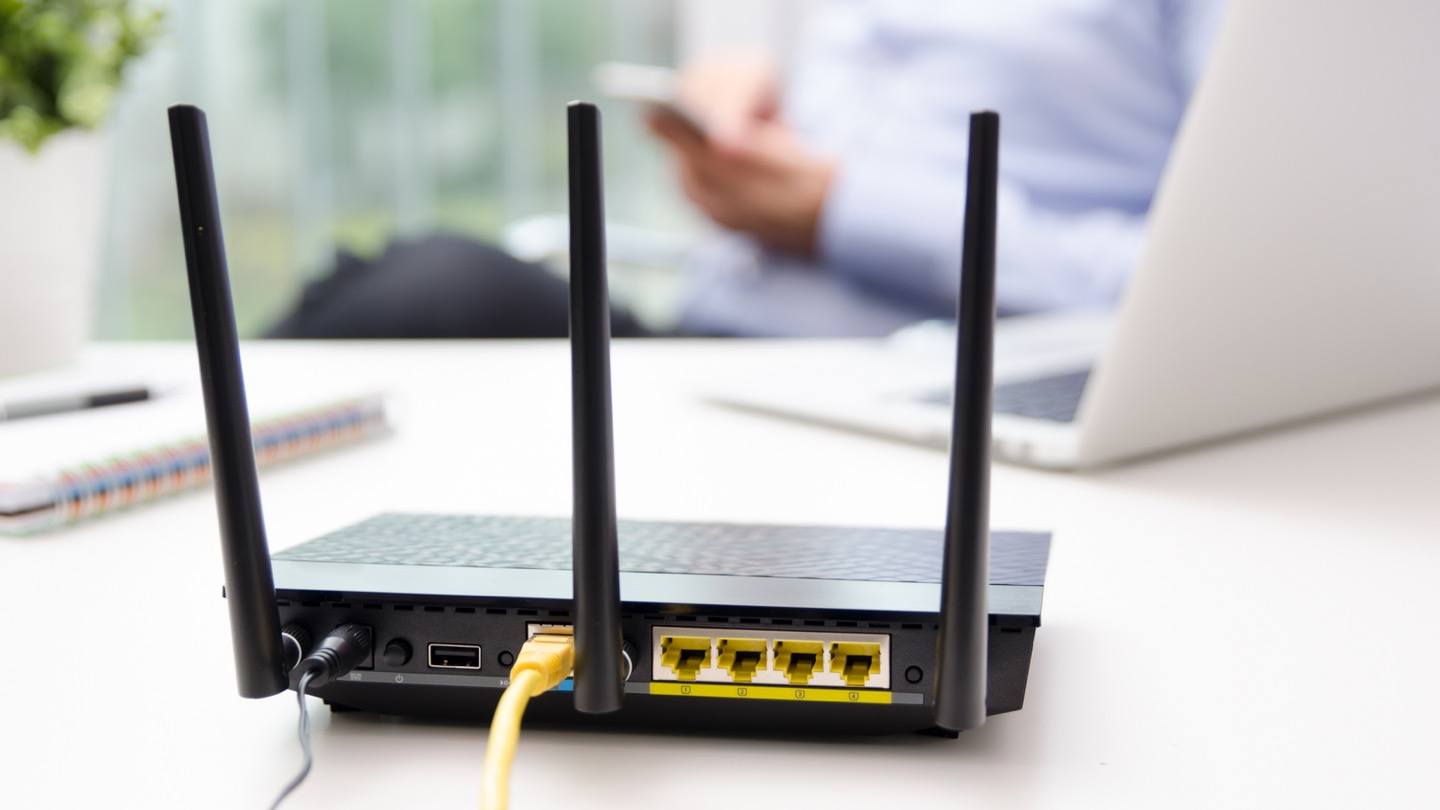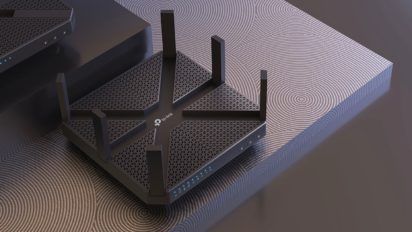Have you ever experienced full Wi-Fi connectivity in one room of your home and the moment you enter another room that glorious connection is lost? If so, you’re definitely not alone. So how do you get around the problem? One solution is a simple-to-use mesh network.
A mesh network gives you a seamless connection to Wi-Fi all over your house and your outdoor spaces. It’s also easy to install and manage. No wonder it’s becoming one of the top options for Wi-Fi connectivity in homes across the country. We’ll show you how a mesh network can improve your home Wi-Fi, how a mesh network works and some easy install tips.
On this page:
The basics of a network
Before we launch into more about a mesh Wi-Fi network, it’s good to know what a network is in the first place. At its core, a network is a group of computers and devices that are linked together to connect people and enable the sharing of information. The internet is often considered to be the network of all networks.
Some networks are linear with components communicating in a straight line, but a mesh network is different. Imagine a spiderweb with components connecting from multiple angles. That’s the type of comprehensive coverage you can get with a well-placed mesh network.
How does a mesh network improve Wi-Fi?
Your home likely has one modem and one router. These primary pieces of internet equipment may be combined into one unit called a gateway. The key to mesh networks is that they use multiple, smaller routers, commonly called nodes.
The main node gets plugged into the modem used by your internet provider, just like the primary router you are currently using. The other nodes pick up the wireless signal and extend it to the area around where they’re placed. These remote nodes don’t rely on direct communication with the router, they simply rely on each other to continue delivering a strong home Wi-Fi signal.
Mesh network vs. a wireless extender
In theory, a wireless extender achieves the same goal as a mesh network by giving you more Wi-Fi coverage in your home. But there are a few differences to take into account when choosing the best Wi-Fi enhancer for your home.
Differences between a mesh network and a Wi-Fi extender
Mesh network
- Multiple nodes create a “net” of Wi-Fi coverage
- Stay connected as you move throughout your home
- Only need one network name and password
Wi-Fi extender
- One separate device that takes your existing Wi-Fi signal and re-broadcasts it in your home
- Requires switching between home networks
- Multiple network names and passwords to remember
The problem with an extender is that you have to manually switch networks to get better Wi-Fi coverage from one location in your house to another. The extender takes away your freedom to move around and stay connected. So much for uninterrupted video bingeing, gaming or simply catching up on emails.
With a mesh network, you get seamless roaming. All you need is one network name and password to stay connected to the strongest signal wherever you are within that network.
The benefits of a mesh network
As if full Wi-Fi coverage weren’t enough, mesh networks have other advantages that are good to know about as you decide if this is right for you.
- Easy to install and manage. If any adjustments are needed, simply use a smartphone app.
- The nodes look better than traditional routers. They’re a lot less clunky and obtrusive, so you can put them out in any room in your home.
- Unlike traditional routers, a mesh router gets around brick walls and other electronics so the communication path remains clear.
- Because the nodes work together, if one goes down you still won’t lose total connectivity.
- Parental control is in your hands. You can create profiles for family members so that you can limit access and time-of-day usage accordingly.
- For added security, most systems send a push notification when someone new is trying to join the network.
- A mesh network has flexible bandwidth, which is perfect for gamers or video watchers.
A couple of drawbacks
Mesh Wi-Fi networks can be pricey because you may have to purchase multiple nodes to cover your entire house. Additionally, mesh networks aren’t beneficial for people living in a small space like a one-bedroom apartment simply because there isn’t a need to extend the connectivity across multiple rooms.
Easy tips for installing a mesh network in your home
To get up and running on a mesh network, all you really need in addition to the nodes are a mobile app and an internet connection. Pre-planning makes all the difference though, so check out these handy tips:
- Plan for the right amount of coverage. Determine the square footage of your home’s interior and the outdoor spaces you want to cover. Once you are ready to purchase a network, check your calculations against the coverage details of the mesh networks you consider purchasing, as coverage varies from one system to the next.
- Start with a Wi-Fi router that delivers maximum speed and performance. Before adding on another component to your home network, make sure your primary router is performing at an optimum level. Check out ways to boost your existing Wi-Fi signal.
- Remember that walls and doorways affect wireless signal transmissions, so you may need to strategically position nodes around these areas.
- The position of each node is important for full coverage and no dead zones. The main router node should be close to your cable modem or existing router and out in the open rather than in a closet or tucked way back in a corner. It should also sit near an AC wall outlet.
- To make placement as efficient as possible, many systems have built-in alerts that let you know if you’re too far away from the main node or a previously installed node.
- Place nodes within 6 – 8 feet of any devices that benefit from a wired LAN connection such as gaming devices or TVs.
Gauging Wi-Fi improvement
To measure improvements in your Wi-Fi home network, make sure to test your speeds in different areas of your home before and after making any changes. That way, you can gauge where you successfully boosted your Wi-Fi signal and where you still need some upgrades.
Need more for the price?
Try these helpful hacks to improve your internet speed. Or if you just want more bang for your buck, check out providers near you with more speed for the price. Either way, we’ll help you find what you need.
View providers near meRather chat? Give us a call: (844) 451-2720
Rather chat? Give us a call: (844) 451-2720Pro Tip: For best results, use an Ethernet cord to connect your router or modem directly to your device before you run the test.
Find other ways to get the most out of your broadband by following the Resource Center and joining our email list.
Last updated 07/31/20.
Written by:
Lisa IscrupeWriter, Broadband & Data Content
Lisa uses years of experience in sales and customer service for internet-TV providers to inform her writing on broadband. Her work has been referenced by CNN and other national sources.
In Lisa’s Words: Ever…
Read more
Edited by:
Trey PaulEditor, Broadband Content
-
Featured
![The best Wi-Fi routers of 2024]() The best Wi-Fi routers of 2024 Camryn Smith — 7 min read
The best Wi-Fi routers of 2024 Camryn Smith — 7 min read -
Featured
![30% of Americans say their internet is too slow. Here’s how to fix it]() 30% of Americans say their internet is too slow. Here’s how to fix it Joe Supan — 4 min read
30% of Americans say their internet is too slow. Here’s how to fix it Joe Supan — 4 min read -
Featured
![18 tips to improve your internet connection and boost Wi-Fi signal]() 18 tips to improve your internet connection and boost Wi-Fi signal Camryn Smith — 9 min read
18 tips to improve your internet connection and boost Wi-Fi signal Camryn Smith — 9 min read
Latest
-
Thursday, April 18, 2024
Comcast introduces new pre-paid internet, mobile and streaming plansRobin Layton — 2 min read
-
Thursday, April 18, 2024
T-Mobile imposes data cap of 1.2TB/mo.Robin Layton — 2 min read
-
Thursday, April 18, 2024
What is a portable Wi-Fi hotspot?Robin Layton — 6 min read





